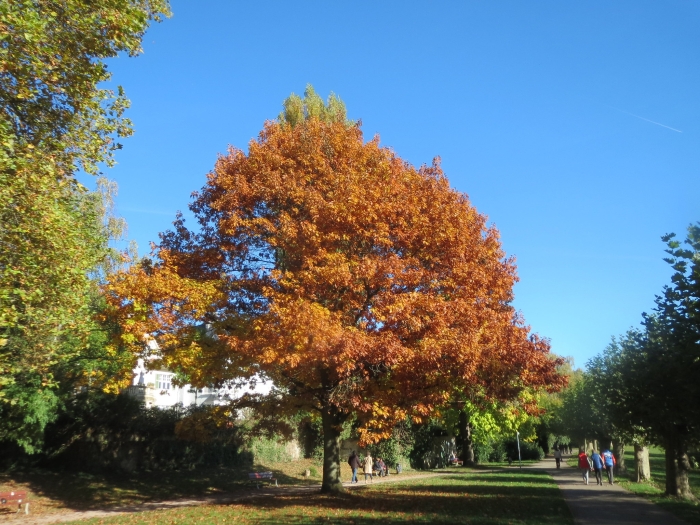Northern Red Oak
(Quercus rubra)
Northern Red Oak (Quercus rubra)
/
/

Andreas Rockstein
CC BY-SA 2.0




































































































Estimated Native Range
Summary
This species is valued for its fast growth rate, adaptability to various soil conditions, and its stunning fall coloration. It is often used as a specimen tree in parks and large gardens, and despite its taproot, modern nursery techniques have facilitated the transplantation of young trees. It thrives in full sun but can tolerate partial shade, requires medium amounts of water, and prefers well-drained soils. While it is less commonly planted than the Pin Oak due to its taproot, the use of specialized growing pots has made seedling establishment more successful. Gardeners should be aware that the Northern Red Oak can suffer from oak wilt, a serious fungal disease, and it may also be susceptible to pests such as the gypsy moth and borers.CC BY-SA 4.0
Plant Description
- Plant Type: Tree
- Height: 60-70 feet
- Width: 40-60 feet
- Growth Rate: Moderate
- Flower Color: N/A
- Flowering Season: Spring
- Leaf Retention: Deciduous
Growth Requirements
- Sun: Full Sun
- Water: Medium
- Drainage: Fast, Medium
Common Uses
Bee Garden, Bird Garden, Butterfly Garden, Deer Resistant, Drought Tolerant, Edible*Disclaimer: Easyscape's listed plant edibility is for informational use. Always verify the safety and proper identification of any plant before consumption., Fire Resistant, Rabbit Resistant, Salt Tolerant, Street Planting
Natural Habitat
Mixed hardwood forests and upland woodlands
Other Names
Common Names: Red Oak, Roteiche, Rot-Eiche, Chêne Rouge Damérique, Chêne Rouge, Chêne Boréal, Amerikaanse Eik, Rödek
Scientific Names: , Quercus rubra, Quercus rubra var. ambigua, Quercus borealis, Quercus acerifolia, Quercus borealis var. maxima, Quercus rubra var. rubra, Quercus rubra var. borealis, Quercus ambigua, Quercus rubra f. cuneata
GBIF Accepted Name: Quercus rubra L.